Gå offline med appen Player FM !
MBA225: The Value of Business Models
Manage episode 301733375 series 2557282
David Mantica helps us understand business models and helps us understand how to find new opportunities to create greater value.
Show Notes
Creating product requirements and delivering features is one thing. Understanding the business context and business models associated with your product and identifying different avenues to drive value is quite another.
Understanding your business model can help drive value for your organization and increase the value that you contribute as a Business Analyst, Product Owner, or Project Manager.
A business model incorporates how you package a product, how you sell it, how you market it, how you deliver it, and how you get paid for it. The packaging refers to the offer itself, not the box it comes in.
Your business model gives you insight into how you extract money or time from somebody for the product and understand the expense necessary that actually deliver it and the margins associated with it. You then tie in how you fit in the value chain of your organization and where you fit from a competitive standpoint.
Business Models for Internal Products
The first thing we have to remember with internal products is that revenue is considered with use and adoption of the product. Instead of revenue being much somebody paid for something, your internal customers pay for what you build based on their time; if they’re using it more, they’re paying a lot of money for it. Once you understand the use, you could tie value back to productivity.
We need to consider that there are different ways that you can deliver; all the different ways you can sell, all the different ways that you could generate revenue, ways that people engage with your product are different. You can commoditize the same solution but within two different business models and get two totally different results. You can understand the business model from an internal perspective by digging into how you deliver something.
How do you package that delivery? What’s the value proposition? What’s the internal marketing associated with it? How you judge success?
Increasing Value
To validate the value of a product, service, or feature, we don’t just need to test ideas. We also have to test how the idea is delivered, the information that is given, and how we monetize its use.
As Business Analysts, we’re a lynchpin between what can happen and who uses it. We have to start influencing the groups in the middle that deliver elements of the product to help them see the fact that their scale and repeat model is in need of an adjustment or needs to be replaced by something else.
By serving as internal management consultants, we can work to understand the changes in the business model and educate people on potential failures and view the business model together to enhance the product value.
One of the failures could be how we support someone when they have a problem or not delivering the service appropriately. Perhaps it’s the wrong platform. Perhaps there’s an external impact based on use that we have to incorporate because all of our customers are using a different software system and they have different experiences.
Understanding how business models change due to a digital transformation is critically important. Looking at options associated with the business model may help you to see different options. Perhaps you can license the product. You can sell the software, sell the data, or provide information online.
Understanding the concept of how a digital transformation starts to impact some of these production environments that we’ve been working on for quite some time is a good educational step to start getting yourself a better understanding of what may occur and then also being able to truly understand the market.
Listen to the full episode to get more advice and insights on using business models to bring more value to your organization and your customers.
| HOMEWORK Review some case studies about different types of business models and take time out to thing about your business models and how you can apply what you’ve learned. |

David Mantica
David Mantica believes leaders should be servants to their organizations and people. He is the Vice President and General Manager at SoftEd, a consultancy that offers advisory and education services to help organizations discover new ways of working for better business outcomes. David is a frequent speaker on Project Management, Business Analysis, and leadership.
Thank you for listening to the program
To get more valuable content to enhance your skills and advance your career, you can subscribe on iTunes and other podcatchers.
Also, reviews on iTunes are highly appreciated! I read each review and it helps keep me motivated to continue to bring you valuable content each week.
Recent Episodes:
- MBA228: Software Development Pearls

- MBA227: The Minimum Viable Business

- MBALC: Elon Musk’s 5-Step Design Process

- MBA226: The FOCCCUS Formula

- MBA225: The Value of Business Models

- MBA224: Corkscrew Thinking
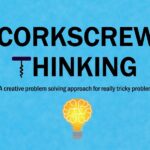
- MBA223: The Human Work Machine

- MBA222: Testing Your Business Ideas

- MBA221: Systems Thinking and Business Agility

- MBA220: Thoughtless Design with Karl Wiegers

- MBA219: How To Be an Agile Business Analyst

- BA Toolbox – A3 Report

- MBA218: Customer-Centric Transformation

- Lightning Cast: Agile Planning

- MBA217: Objectives and Key Results

- Lightning Cast: POWER Start for Your Meetings

- MBA216: Outcome Based Change
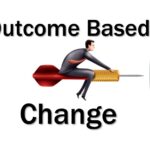
- Lightning Cast: Resistance to Change

- MBA215: The Challenges with Leading in Product Management

- MBA214: The BA Success Path

- MBA213: Applying Theory of Constraints

- MBA212: Transforming Your Work with Modern Agile

- MBA211: Adaptive Leadership

- MBA210: Vital Communication

- MBA209: Visual Thinking

- MBA208: Facilitative Leadership

- MBA207: Bad Behaviors in the Workplace

- MBA206: Succeeding with Analytics

- Lightning Cast: BA Goals Revisited

- MBA205: Beyond Data Literacy

- MBA204: Top Skills for 2020

- MBA203: Career Insurance

- Yes, Virginia, There Are BAs in Agile

- Lightning Cast: Failure to Launch (a new product)

- MBA202: Business Value Analysis

- MBA201: Tips From an Accidental Product Owner

- MBA200: Take Action! The Best Advice from Over 200 Episodes

- MBA199: The Future of the BA Profession

- MBA198: DevOps – What it Means for BAs

- MBA197: Making Change Fun

- MBA196: Customer Journey Treasure Hunting

- MBA195: Example Mapping

- MBA194: Start Your Project Off Right

- MBA193: About Your Career

- Lightning Cast: Story Estimation – What’s the Point?

- Lightning Cast: Requirements Rot

- MBA192: The Blight of Product Debt

- Lightning Cast: The Power to Get Things Done

- MBA191: Use Cases in Agile

- Lightning Cast: AI – Can you be replaced by a machine?

- MBA190: Business Data Analytics

- Lightning Cast: You Are a Facilitator

- MBA189: Adventures in Product Ownership

- Lightning Cast: Simplified Value Stream Mapping

- MBA188: The Four Ps of Product Ownership

- Lightning Cast: Product Debt

- MBA187: Transitioning to a Scrum Master Role

- Lightning Cast: Business Agility

- MBA186: Exploring Product Ownership

- Lightning Cast: Don’t Throw it Over the Wall

- MBA185: Business Analysis in Agile

- Lightning Cast: Non-Functional Requirements in Agile

- MBA184: Discover What Customers Want with JTBD

- Lightning Cast: We Are the Business

- MBA183: The BA Role on a Scrum Team

- MBA182: BA in the Service Industry

- Lightning Cast: Death, Taxes, and Missed Requirements

- MBA181: The Three BA Archetypes

- MBA180: Socratic Questioning

- Lightning Cast: BA Performance Goals

- MBA179: The Power of Prototyping

- MBA178: Career Options for BAs

- MBA177: Product Backlog Refinement

- MBA176: Predictions for 2019

- Lightning Cast: A Visit From the Business Analyst

- MBA175: Product Management is the New Business Analysis – Part 2
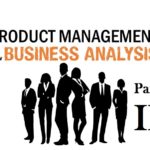
- MBA174: Product Management is the New Business Analysis

- MBA173: Avoiding the Build Trap

- MBA172: Decide Smarter Faster with Kupe Kupersmith

- MBA171: Your Questions Answered – Listener Mailbag

- MBA170: Persuasion – Get Buy-In for Your Ideas

- Lightning Cast: Big Design Up Front

- MBA169: Digital Business Analyst Competencies

- MBA168: Exploring the BA Career Path

- MBA167: The Power of Storytelling

- MBA166: Mastering the Art of Feedback

- Special Message
- MBA165: Remembering Jerry Weinberg

- Lightning Cast: Think as a Customer

- MBA164: The Agile Analysis Certification

- MBA163: Lean Six Sigma – What You Should Know

- Lightning Cast: Moving to a BA Role

- MBA162: The Business Analyst Role and its Real Value

- MBA161: Evolution of the BA Role

- Lightning Cast: Dude’s Law

- MBA160: The Art of Better Business Requirements

- Lightning Cast: Business Agility

- MBA159: Experiment Driven Development

- MBA158: Agile Requirements

- MBA157: The Importance of Good Data Analysis

- Lightning Cast: Symptoms of Success

- MBA156: The Power of Mentoring

- MBA155: Hiring BAs and PMs

- MBA154: Change Leadership

- Lightning Cast: BA on a Scrum Team

- MBA153: Trends in Business Analysis

- Lightning Cast: Powerful Questions

- MBA152: Finding the Right Project

- Lightning Cast: Order your Backlog

- MBA151: Your Consulting Practice – with Karl Wiegers

- Lightning Cast: Which Communications Channel Should You Use?

- MBA150: A High Five for Business Analysts

- Lightning Cast: Common Issues Facing Business Analysts Today

- MBA149: The Power of EQ

- Lightning Cast: The Business Alchemist

- MBA148: 7 Keys to Succeeding with Agile

- Lightning Cast: Trust – The One Thing that Changes Everything

- MBA147: The Business Agility Manifesto

- MBA146: The Full Stack Business Analyst

- MBA145: Predictions for 2018

- Lightning Cast: Confessions of a Recovering Perfectionist

- MBA144: The 12 Days of the Project

- Lightning Cast: Stepping Up to Product Ownership

- MBA143: Imposter Syndrome – Banishing Your Inner Critic

- Lightning Cast: Root Cause Analysis

- Lightning Cast: Using Competency Models

- MBA142: Lean Startup for the Enterprise

- MBA141: Digital Transformation – What is Means for BAs

- MBA140: Improve Influence with NLP

- Lightning Cast: Better Communication Using the DiSC Model

- MBA139: Thin Slicing Problem Analysis

- Lightning Cast: The Many Uses of a SIPOC

- MBA138: Building a Believable Business Case

- Lightning Cast: Stay in Your Lane

- MBA137: Challenges with User Stories – with Mike Cohn

- MBA136: What the IIBA Can Do for You – Part2

- MBA135: What the IIBA Can Do for You

- Lightning Cast: Flip the Script in Your Job Search

- MBA134: Distinguishing Yourself in Your Career

- Lightning Cast: Brainstorming – You’re Doing It Wrong!

- MBA133: What BAs Need to Know About Agile

- Lightning Cast: Requirements Quality

- MBA132: Next Generation Competencies

- Lightning Cast: The Agile Business Analyst Mindset

- MBA131: Interviewing for a Business Analyst Position

- Lightning Cast: The Business Analyst Career Path

- MBA130: Exploring Requirements with Jerry Weinberg

- MBA129: Real Life Agile, UX, and Design Thinking

- MBA128: Where Should the Business Analyst Reside?

- MBA127: Guiding Principles for the Business Analyst – part 2

- MBA126: Guiding Principles for the Business Analyst

- MBA125: Become the Conscience of the Business

- MBA124: Business Analyst in an Agile Environment

- MBA123: The 21st Century Business Analyst

- MBA122: Driving Real Value Through Business Analysis

- MBA121: Mastering Product Ownership

- MBA120: Jobs to be Done Theory

- MBA119: What’s in Your Backlog?

- MBA118: Virtual Leadership

- MBA117: Getting Requirements Right

- MBA116: Implementing Solutions vs Problem Solving

- MBA115: Political Martial Arts – Navigating Office Politics

- MBA114: Value Proposition of the BA Role

- MBA113: Problem Solving – The RIGHT Stuff

- MBA112: User Centered Design

- MBA111: Design Thinking IS Good Business Analysis

- MBA110: Managing Ambiguous Requirements

- MBA109: Foundations in Business Analysis

- MBA108: Prioritizing with the MVP

- MBA107: Backlog Refinement – From Misunderstanding to Collaborative Discovery

- MBA106: Rapid Requirements Gathering

- MBA105: The Best Advice I Ever Received

- MBA104: Predictions for 2017

- MBA103: How Mr. Finch Stole the Project

- MBA102: Product Management – Build the Right Thing

- MBA101: Split Your Stories!

- MBA100: My Biggest Mistake

- MBA099: Assumptions Mapping

- MBA098: The Art and Science of Influence

- MBA097: Partnership Between the PM and BA

- MBA096: The Standard for Business Analysis

- MBA095: Lean Change Management

- MBA094: Perspectives in Business Analysis

- MBA093: Beyond Project Risk

- MBA092: Reducing the Risk of Missing Non-Functional Requirements

- MBA091: Going from Order Taker to Trusted Advisor

- MBA090: BABOK 3.0 with Richard Larson

- MBA089: Agile Manifesto – What it Means to Business Analysts

- MBA088: Effective Requirements Workshops

- MBA087: Replaced by a Robot – Interview with Kupe Kupersmith

- MBA086: DocOps – Keep Your Documentation Agile

- MBA085: From Models to Stories

- MBA084: Agile Modeling with Scott Ambler

- MBA083: The BA Core Concept Model

- MBA082: Addressing Bottlenecks with Theory of Constraints

- MBA081: User Story Mapping with David Hussman

- MBA080: Think Like a Freak

- MBA079: Effective Collaboration

- MBA078: Design Sprints

- MBA077: Preparing for the Future of Business Analysis

- MBA076: Product Strategy

- MBA075: Slices of Big Truths

- MBA074: Lean Business Analysis

- MBA073: Agile Requirements – What’s Different

- MBA072: Improve Your Facilitation

- MBA071: The Essence of Business Analysis

- MBA070: Better BA and PM Collaboration

- MBA069: Business Rules – What You Need to Know

- MBA068: Realities of Being a Product Owner

- MBA067: All About the PMI-PBA Certification

- MBA066: Starting a BA Community of Practice

- MBA065: The Value of Business Analysis

- MBA064: Transitioning to a Product Owner Role

- MBA063: Starting a Career in Business Analysis

- MBA062: Peer Reviews for Better Requirements

- MBA061: Overcoming Roadblocks to Success on Complex Projects

- MBA060: Business Architecture and Business Analysis

- MBA059: Problem Solving for Business Analysts

- MBA058: Reusable Discovery Testing

- MBA057: The 6 Stakeholders You’ll Meet in Project Hell

- MBA056: Design Thinking for Better Business Analysis
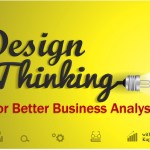
- MBA055: The Agile BA – Interview with Ryland Leyton

- MBA054: Strategy and its Role in Business Analysis

- MBA053: Use Cases and Beyond – with Ivar Jacobson

- MBA052: Portfolio Management & The Agile Extension

- MBA051: A Visit From the Business Analyst

- MBA050: The T-Shaped Business Analyst

- MBA049: The First Line of Defense Against a Security Breach

- MBA048: Finding the Minimum Viable Product

- MBA047: The DNA of a Great Agile Business Analyst

- MBA046: The Product Owner / Business Analyst Relationship

- MBA045: The Agile BA – Myths and Misconceptions

- MBA044: Business Process Automation
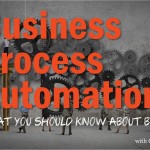
- MBA043: Abuser Stories – Think Like a Bad Guy

- MBA042: Stop Using User Stories – Interview with Jim Benson

- MBA041: What’s the Second Best User Story?
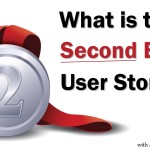
- MBA040: User Stories – Are You Ready?

- MBA039: The Big Deal with Big Data

- MBA038: Use Cases, CX, and UX: Putting it all together
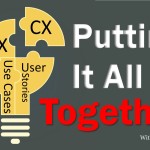
- MBA037: The Key to Better Collaboration

- MBA036: Psychology of Leadership – Interview with Cillín Hearns

- MBA035: Active Listening – The Most Important Skill

- MBA034: Use Case 2.0 – Interview with Ian Spence

- MBA033: Landing and Succeeding in Your First BA Role – Interview with Alex Papworth

- MBA032: Systems Thinking – Interview with Paula Bell

- MBA031: UX – Are you Experienced? Interview with Neil Turner

- MBA030: Myths and Patterns of Organizational Change – Interview with Linda Rising

- MBA029: Business Process Improvement – Keep it Simple – Interview with Brian Hunt
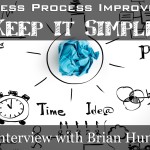
- MBA028: Talking Techie and Presenting Complex Ideas with Melissa Marshall

- MBA027: Elicit User Requirements with Legos – Interview with Ellen Grove

- MBA026: Guarding Against Scope Creep

- MBA025: Don’t Just Make Software, Make an Impact – Interview with Gojko Adzic

- MBA024: Lead with the Power of a Jedi – Interview with Heather Mylan-Mains

- MBA023: Using Behavior Driven Development for Better User Stories – Interview with Jeffrey Davidson

- MBA022: How to Know Where to Focus Your Efforts – Interview with Chris Matts

- MBA021: Is the Business Analyst Role Just Overhead? Interview with John Sextro

- MBA020: The Value of Certifications – Interview with David Mantica
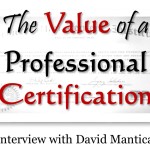
- MBA019: Why Start with Why? Interview with Stephen Shedletzky

- MBA018: Step Up to Leadership with the Five-Rule Framework – Interview with Scott Stribrny
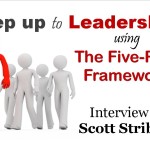
- MBA017: Does Your Communications Engine Need a Tune-Up? Interview with David Barrett

- MBA016: User Story Mapping with Jeff Patton
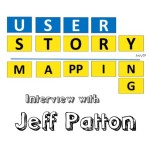
- MBA015: Promise Theory for Team Cooperation – Interview with Mark Burgess
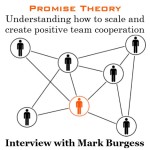
- MBA014: The Future of Business Analysis – Interview with David Mantica

- MBA013: Trust is the New Workplace Currency – Interview with Nan Russell

- MBA012: Beyond Requirements – Interview with Kent McDonald

- MBA011: Make Your Waterfall Projects More Agile

- MBA010: Make Virtual Meetings More Effective – Interview with Angela Wick

- MBA009: Exploring the 7 Product Dimensions for Better Requirements Discovery – Interview with Mary Gorman

- MBA008: How to Discover Product Requirements – Interview with Ellen Gottesdiener

- MBA007: How to be a Badass Business Analyst – Interview with Bob Prentiss

- MBA006: The Business Analyst Career Path – Interview with David DeWitt

- MBA005: Interview with Len Lagestee – How can a BA deliver value to an Agile Team?

- MBA004: Defeat the Meeting Super Villians

- MBA003: How can introverts work well on agile teams – Interview with Ken Howard

- MBA002: How to Elicit Non-Functional Requirements – Interview with Roxanne Miller

- MBA001: Introduction to the Mastering Business Analysis Podcast
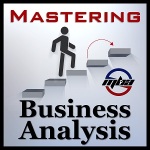
The post MBA225: The Value of Business Models appeared first on Mastering Business Analysis.
276 episoder
Manage episode 301733375 series 2557282
David Mantica helps us understand business models and helps us understand how to find new opportunities to create greater value.
Show Notes
Creating product requirements and delivering features is one thing. Understanding the business context and business models associated with your product and identifying different avenues to drive value is quite another.
Understanding your business model can help drive value for your organization and increase the value that you contribute as a Business Analyst, Product Owner, or Project Manager.
A business model incorporates how you package a product, how you sell it, how you market it, how you deliver it, and how you get paid for it. The packaging refers to the offer itself, not the box it comes in.
Your business model gives you insight into how you extract money or time from somebody for the product and understand the expense necessary that actually deliver it and the margins associated with it. You then tie in how you fit in the value chain of your organization and where you fit from a competitive standpoint.
Business Models for Internal Products
The first thing we have to remember with internal products is that revenue is considered with use and adoption of the product. Instead of revenue being much somebody paid for something, your internal customers pay for what you build based on their time; if they’re using it more, they’re paying a lot of money for it. Once you understand the use, you could tie value back to productivity.
We need to consider that there are different ways that you can deliver; all the different ways you can sell, all the different ways that you could generate revenue, ways that people engage with your product are different. You can commoditize the same solution but within two different business models and get two totally different results. You can understand the business model from an internal perspective by digging into how you deliver something.
How do you package that delivery? What’s the value proposition? What’s the internal marketing associated with it? How you judge success?
Increasing Value
To validate the value of a product, service, or feature, we don’t just need to test ideas. We also have to test how the idea is delivered, the information that is given, and how we monetize its use.
As Business Analysts, we’re a lynchpin between what can happen and who uses it. We have to start influencing the groups in the middle that deliver elements of the product to help them see the fact that their scale and repeat model is in need of an adjustment or needs to be replaced by something else.
By serving as internal management consultants, we can work to understand the changes in the business model and educate people on potential failures and view the business model together to enhance the product value.
One of the failures could be how we support someone when they have a problem or not delivering the service appropriately. Perhaps it’s the wrong platform. Perhaps there’s an external impact based on use that we have to incorporate because all of our customers are using a different software system and they have different experiences.
Understanding how business models change due to a digital transformation is critically important. Looking at options associated with the business model may help you to see different options. Perhaps you can license the product. You can sell the software, sell the data, or provide information online.
Understanding the concept of how a digital transformation starts to impact some of these production environments that we’ve been working on for quite some time is a good educational step to start getting yourself a better understanding of what may occur and then also being able to truly understand the market.
Listen to the full episode to get more advice and insights on using business models to bring more value to your organization and your customers.
| HOMEWORK Review some case studies about different types of business models and take time out to thing about your business models and how you can apply what you’ve learned. |

David Mantica
David Mantica believes leaders should be servants to their organizations and people. He is the Vice President and General Manager at SoftEd, a consultancy that offers advisory and education services to help organizations discover new ways of working for better business outcomes. David is a frequent speaker on Project Management, Business Analysis, and leadership.
Thank you for listening to the program
To get more valuable content to enhance your skills and advance your career, you can subscribe on iTunes and other podcatchers.
Also, reviews on iTunes are highly appreciated! I read each review and it helps keep me motivated to continue to bring you valuable content each week.
Recent Episodes:
- MBA228: Software Development Pearls

- MBA227: The Minimum Viable Business

- MBALC: Elon Musk’s 5-Step Design Process

- MBA226: The FOCCCUS Formula

- MBA225: The Value of Business Models

- MBA224: Corkscrew Thinking

- MBA223: The Human Work Machine

- MBA222: Testing Your Business Ideas

- MBA221: Systems Thinking and Business Agility

- MBA220: Thoughtless Design with Karl Wiegers

- MBA219: How To Be an Agile Business Analyst

- BA Toolbox – A3 Report

- MBA218: Customer-Centric Transformation

- Lightning Cast: Agile Planning

- MBA217: Objectives and Key Results

- Lightning Cast: POWER Start for Your Meetings

- MBA216: Outcome Based Change

- Lightning Cast: Resistance to Change

- MBA215: The Challenges with Leading in Product Management

- MBA214: The BA Success Path

- MBA213: Applying Theory of Constraints

- MBA212: Transforming Your Work with Modern Agile

- MBA211: Adaptive Leadership

- MBA210: Vital Communication

- MBA209: Visual Thinking

- MBA208: Facilitative Leadership

- MBA207: Bad Behaviors in the Workplace

- MBA206: Succeeding with Analytics

- Lightning Cast: BA Goals Revisited

- MBA205: Beyond Data Literacy

- MBA204: Top Skills for 2020

- MBA203: Career Insurance

- Yes, Virginia, There Are BAs in Agile

- Lightning Cast: Failure to Launch (a new product)

- MBA202: Business Value Analysis

- MBA201: Tips From an Accidental Product Owner

- MBA200: Take Action! The Best Advice from Over 200 Episodes

- MBA199: The Future of the BA Profession

- MBA198: DevOps – What it Means for BAs

- MBA197: Making Change Fun

- MBA196: Customer Journey Treasure Hunting

- MBA195: Example Mapping

- MBA194: Start Your Project Off Right

- MBA193: About Your Career

- Lightning Cast: Story Estimation – What’s the Point?

- Lightning Cast: Requirements Rot

- MBA192: The Blight of Product Debt

- Lightning Cast: The Power to Get Things Done

- MBA191: Use Cases in Agile

- Lightning Cast: AI – Can you be replaced by a machine?

- MBA190: Business Data Analytics

- Lightning Cast: You Are a Facilitator

- MBA189: Adventures in Product Ownership

- Lightning Cast: Simplified Value Stream Mapping

- MBA188: The Four Ps of Product Ownership

- Lightning Cast: Product Debt

- MBA187: Transitioning to a Scrum Master Role

- Lightning Cast: Business Agility

- MBA186: Exploring Product Ownership

- Lightning Cast: Don’t Throw it Over the Wall

- MBA185: Business Analysis in Agile

- Lightning Cast: Non-Functional Requirements in Agile

- MBA184: Discover What Customers Want with JTBD

- Lightning Cast: We Are the Business

- MBA183: The BA Role on a Scrum Team

- MBA182: BA in the Service Industry

- Lightning Cast: Death, Taxes, and Missed Requirements

- MBA181: The Three BA Archetypes

- MBA180: Socratic Questioning

- Lightning Cast: BA Performance Goals

- MBA179: The Power of Prototyping

- MBA178: Career Options for BAs

- MBA177: Product Backlog Refinement

- MBA176: Predictions for 2019

- Lightning Cast: A Visit From the Business Analyst

- MBA175: Product Management is the New Business Analysis – Part 2

- MBA174: Product Management is the New Business Analysis

- MBA173: Avoiding the Build Trap

- MBA172: Decide Smarter Faster with Kupe Kupersmith

- MBA171: Your Questions Answered – Listener Mailbag

- MBA170: Persuasion – Get Buy-In for Your Ideas

- Lightning Cast: Big Design Up Front

- MBA169: Digital Business Analyst Competencies

- MBA168: Exploring the BA Career Path

- MBA167: The Power of Storytelling

- MBA166: Mastering the Art of Feedback

- Special Message
- MBA165: Remembering Jerry Weinberg

- Lightning Cast: Think as a Customer

- MBA164: The Agile Analysis Certification

- MBA163: Lean Six Sigma – What You Should Know

- Lightning Cast: Moving to a BA Role

- MBA162: The Business Analyst Role and its Real Value

- MBA161: Evolution of the BA Role

- Lightning Cast: Dude’s Law

- MBA160: The Art of Better Business Requirements

- Lightning Cast: Business Agility

- MBA159: Experiment Driven Development

- MBA158: Agile Requirements

- MBA157: The Importance of Good Data Analysis

- Lightning Cast: Symptoms of Success

- MBA156: The Power of Mentoring

- MBA155: Hiring BAs and PMs

- MBA154: Change Leadership

- Lightning Cast: BA on a Scrum Team

- MBA153: Trends in Business Analysis

- Lightning Cast: Powerful Questions

- MBA152: Finding the Right Project

- Lightning Cast: Order your Backlog

- MBA151: Your Consulting Practice – with Karl Wiegers

- Lightning Cast: Which Communications Channel Should You Use?

- MBA150: A High Five for Business Analysts

- Lightning Cast: Common Issues Facing Business Analysts Today

- MBA149: The Power of EQ

- Lightning Cast: The Business Alchemist

- MBA148: 7 Keys to Succeeding with Agile

- Lightning Cast: Trust – The One Thing that Changes Everything

- MBA147: The Business Agility Manifesto

- MBA146: The Full Stack Business Analyst

- MBA145: Predictions for 2018

- Lightning Cast: Confessions of a Recovering Perfectionist

- MBA144: The 12 Days of the Project

- Lightning Cast: Stepping Up to Product Ownership

- MBA143: Imposter Syndrome – Banishing Your Inner Critic

- Lightning Cast: Root Cause Analysis

- Lightning Cast: Using Competency Models

- MBA142: Lean Startup for the Enterprise

- MBA141: Digital Transformation – What is Means for BAs

- MBA140: Improve Influence with NLP

- Lightning Cast: Better Communication Using the DiSC Model

- MBA139: Thin Slicing Problem Analysis

- Lightning Cast: The Many Uses of a SIPOC

- MBA138: Building a Believable Business Case

- Lightning Cast: Stay in Your Lane

- MBA137: Challenges with User Stories – with Mike Cohn

- MBA136: What the IIBA Can Do for You – Part2

- MBA135: What the IIBA Can Do for You

- Lightning Cast: Flip the Script in Your Job Search

- MBA134: Distinguishing Yourself in Your Career

- Lightning Cast: Brainstorming – You’re Doing It Wrong!

- MBA133: What BAs Need to Know About Agile

- Lightning Cast: Requirements Quality

- MBA132: Next Generation Competencies

- Lightning Cast: The Agile Business Analyst Mindset

- MBA131: Interviewing for a Business Analyst Position

- Lightning Cast: The Business Analyst Career Path

- MBA130: Exploring Requirements with Jerry Weinberg

- MBA129: Real Life Agile, UX, and Design Thinking

- MBA128: Where Should the Business Analyst Reside?

- MBA127: Guiding Principles for the Business Analyst – part 2

- MBA126: Guiding Principles for the Business Analyst

- MBA125: Become the Conscience of the Business

- MBA124: Business Analyst in an Agile Environment

- MBA123: The 21st Century Business Analyst

- MBA122: Driving Real Value Through Business Analysis

- MBA121: Mastering Product Ownership

- MBA120: Jobs to be Done Theory

- MBA119: What’s in Your Backlog?

- MBA118: Virtual Leadership

- MBA117: Getting Requirements Right

- MBA116: Implementing Solutions vs Problem Solving

- MBA115: Political Martial Arts – Navigating Office Politics

- MBA114: Value Proposition of the BA Role

- MBA113: Problem Solving – The RIGHT Stuff

- MBA112: User Centered Design

- MBA111: Design Thinking IS Good Business Analysis

- MBA110: Managing Ambiguous Requirements

- MBA109: Foundations in Business Analysis

- MBA108: Prioritizing with the MVP

- MBA107: Backlog Refinement – From Misunderstanding to Collaborative Discovery

- MBA106: Rapid Requirements Gathering

- MBA105: The Best Advice I Ever Received

- MBA104: Predictions for 2017

- MBA103: How Mr. Finch Stole the Project

- MBA102: Product Management – Build the Right Thing

- MBA101: Split Your Stories!

- MBA100: My Biggest Mistake

- MBA099: Assumptions Mapping

- MBA098: The Art and Science of Influence

- MBA097: Partnership Between the PM and BA

- MBA096: The Standard for Business Analysis

- MBA095: Lean Change Management

- MBA094: Perspectives in Business Analysis

- MBA093: Beyond Project Risk

- MBA092: Reducing the Risk of Missing Non-Functional Requirements

- MBA091: Going from Order Taker to Trusted Advisor

- MBA090: BABOK 3.0 with Richard Larson

- MBA089: Agile Manifesto – What it Means to Business Analysts

- MBA088: Effective Requirements Workshops

- MBA087: Replaced by a Robot – Interview with Kupe Kupersmith

- MBA086: DocOps – Keep Your Documentation Agile

- MBA085: From Models to Stories

- MBA084: Agile Modeling with Scott Ambler

- MBA083: The BA Core Concept Model

- MBA082: Addressing Bottlenecks with Theory of Constraints

- MBA081: User Story Mapping with David Hussman

- MBA080: Think Like a Freak

- MBA079: Effective Collaboration

- MBA078: Design Sprints

- MBA077: Preparing for the Future of Business Analysis

- MBA076: Product Strategy

- MBA075: Slices of Big Truths

- MBA074: Lean Business Analysis

- MBA073: Agile Requirements – What’s Different

- MBA072: Improve Your Facilitation

- MBA071: The Essence of Business Analysis

- MBA070: Better BA and PM Collaboration

- MBA069: Business Rules – What You Need to Know

- MBA068: Realities of Being a Product Owner

- MBA067: All About the PMI-PBA Certification

- MBA066: Starting a BA Community of Practice

- MBA065: The Value of Business Analysis

- MBA064: Transitioning to a Product Owner Role

- MBA063: Starting a Career in Business Analysis

- MBA062: Peer Reviews for Better Requirements

- MBA061: Overcoming Roadblocks to Success on Complex Projects

- MBA060: Business Architecture and Business Analysis

- MBA059: Problem Solving for Business Analysts

- MBA058: Reusable Discovery Testing

- MBA057: The 6 Stakeholders You’ll Meet in Project Hell

- MBA056: Design Thinking for Better Business Analysis

- MBA055: The Agile BA – Interview with Ryland Leyton

- MBA054: Strategy and its Role in Business Analysis

- MBA053: Use Cases and Beyond – with Ivar Jacobson

- MBA052: Portfolio Management & The Agile Extension

- MBA051: A Visit From the Business Analyst

- MBA050: The T-Shaped Business Analyst

- MBA049: The First Line of Defense Against a Security Breach

- MBA048: Finding the Minimum Viable Product

- MBA047: The DNA of a Great Agile Business Analyst

- MBA046: The Product Owner / Business Analyst Relationship

- MBA045: The Agile BA – Myths and Misconceptions

- MBA044: Business Process Automation

- MBA043: Abuser Stories – Think Like a Bad Guy

- MBA042: Stop Using User Stories – Interview with Jim Benson

- MBA041: What’s the Second Best User Story?

- MBA040: User Stories – Are You Ready?

- MBA039: The Big Deal with Big Data

- MBA038: Use Cases, CX, and UX: Putting it all together

- MBA037: The Key to Better Collaboration

- MBA036: Psychology of Leadership – Interview with Cillín Hearns

- MBA035: Active Listening – The Most Important Skill

- MBA034: Use Case 2.0 – Interview with Ian Spence

- MBA033: Landing and Succeeding in Your First BA Role – Interview with Alex Papworth

- MBA032: Systems Thinking – Interview with Paula Bell

- MBA031: UX – Are you Experienced? Interview with Neil Turner

- MBA030: Myths and Patterns of Organizational Change – Interview with Linda Rising

- MBA029: Business Process Improvement – Keep it Simple – Interview with Brian Hunt

- MBA028: Talking Techie and Presenting Complex Ideas with Melissa Marshall

- MBA027: Elicit User Requirements with Legos – Interview with Ellen Grove

- MBA026: Guarding Against Scope Creep

- MBA025: Don’t Just Make Software, Make an Impact – Interview with Gojko Adzic

- MBA024: Lead with the Power of a Jedi – Interview with Heather Mylan-Mains

- MBA023: Using Behavior Driven Development for Better User Stories – Interview with Jeffrey Davidson

- MBA022: How to Know Where to Focus Your Efforts – Interview with Chris Matts

- MBA021: Is the Business Analyst Role Just Overhead? Interview with John Sextro

- MBA020: The Value of Certifications – Interview with David Mantica

- MBA019: Why Start with Why? Interview with Stephen Shedletzky

- MBA018: Step Up to Leadership with the Five-Rule Framework – Interview with Scott Stribrny

- MBA017: Does Your Communications Engine Need a Tune-Up? Interview with David Barrett

- MBA016: User Story Mapping with Jeff Patton

- MBA015: Promise Theory for Team Cooperation – Interview with Mark Burgess

- MBA014: The Future of Business Analysis – Interview with David Mantica

- MBA013: Trust is the New Workplace Currency – Interview with Nan Russell

- MBA012: Beyond Requirements – Interview with Kent McDonald

- MBA011: Make Your Waterfall Projects More Agile

- MBA010: Make Virtual Meetings More Effective – Interview with Angela Wick

- MBA009: Exploring the 7 Product Dimensions for Better Requirements Discovery – Interview with Mary Gorman

- MBA008: How to Discover Product Requirements – Interview with Ellen Gottesdiener

- MBA007: How to be a Badass Business Analyst – Interview with Bob Prentiss

- MBA006: The Business Analyst Career Path – Interview with David DeWitt

- MBA005: Interview with Len Lagestee – How can a BA deliver value to an Agile Team?

- MBA004: Defeat the Meeting Super Villians

- MBA003: How can introverts work well on agile teams – Interview with Ken Howard

- MBA002: How to Elicit Non-Functional Requirements – Interview with Roxanne Miller

- MBA001: Introduction to the Mastering Business Analysis Podcast

The post MBA225: The Value of Business Models appeared first on Mastering Business Analysis.
276 episoder
Alle episoder
×Velkommen til Player FM!
Player FM is scanning the web for high-quality podcasts for you to enjoy right now. It's the best podcast app and works on Android, iPhone, and the web. Signup to sync subscriptions across devices.





